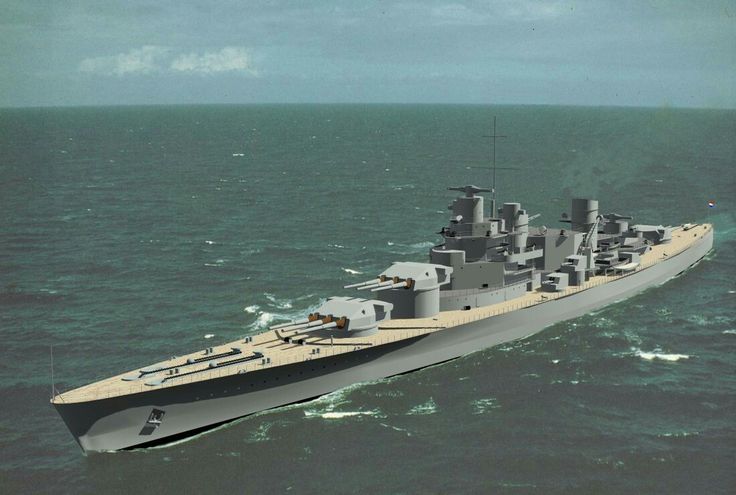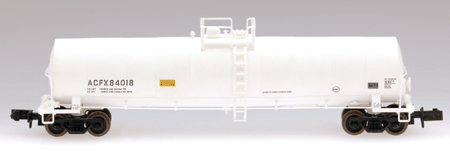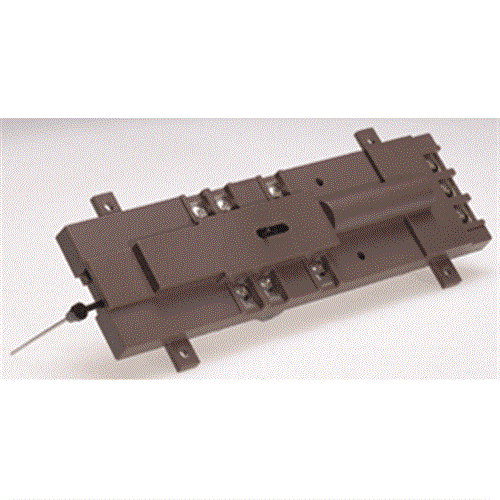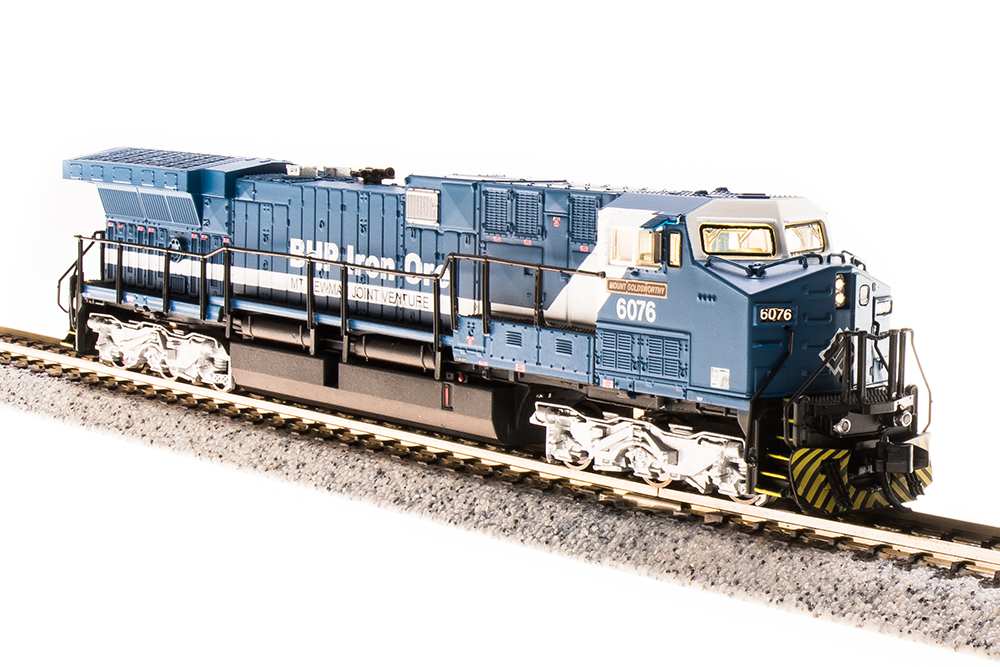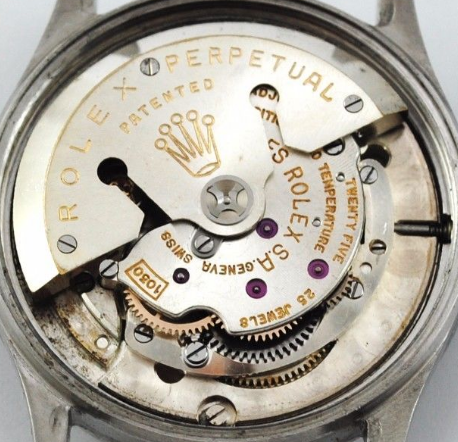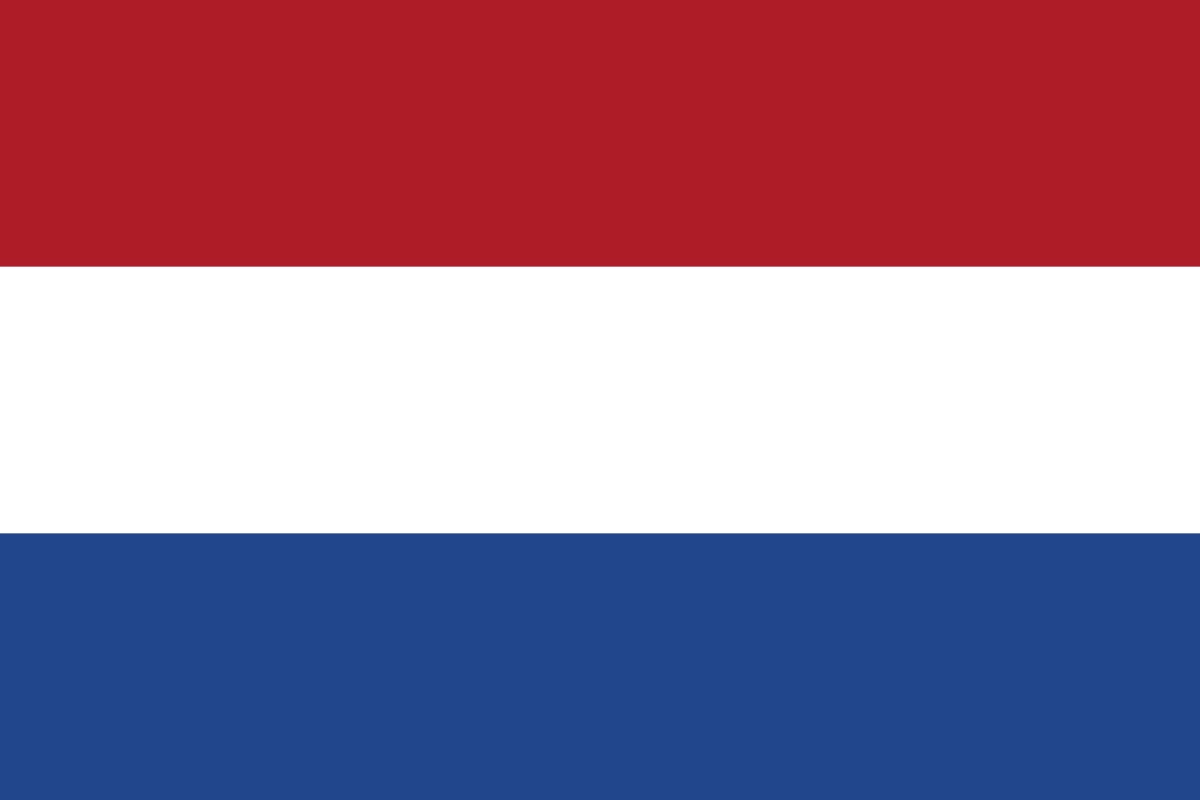History: Design 1047, also known as Project 1047, was a series of plans for a class of Dutch battlecruisers prior to the Second World War. The ships were intended to counter a perceived threat posed by Imperial Japanese aggression to the Dutch colonies in the East Indies. Dutch intelligence believed that the Imperial Japanese Navy would deploy its capital ships (aircraft carriers and battleships) against their counterparts of the United States Navy and the British Royal Navy, leaving heavy and light cruisers, along with seaplane carriers, as the largest ships available for an advance into the East Indies. As such, the 1047s were shaped by the need to be able to fight their way through a fleet composed of these ships and smaller destroyers. It was hoped that this capability would allow the battlecruisers to act as a fleet in being.
After a recommendation from high-ranking Dutch naval officers that the Koninklijke Marine (Royal Netherlands Navy) be bolstered so any attacker would have to "use such a large part of his military potential that there would be an unacceptable weakening of his capabilities in other theaters", the Minister of Defense ordered the Navy to prepare designs for a two or three-member class of battlecruisers. As they had not previously designed a modern capital ship, and the only information available on modern designs came from public literature and editions of Jane's Fighting Ships, the Dutch turned to Germany. This initially bore no results, as the two sides were unable to come to terms. During this time, a preliminary plan was drawn up without foreign assistance; completed on 11 July 1939, it was missing many of the post-First World War advances in warship technology. In particular, the armor protection was totally outmoded.
After a recommendation from high-ranking Dutch naval officers that the Koninklijke Marine (Royal Netherlands Navy) be bolstered so any attacker would have to "use such a large part of his military potential that there would be an unacceptable weakening of his capabilities in other theaters", the Minister of Defense ordered the Navy to prepare designs for a two or three-member class of battlecruisers. As they had not previously designed a modern capital ship, and the only information available on modern designs came from public literature and editions of Jane's Fighting Ships, the Dutch turned to Germany. This initially bore no results, as the two sides were unable to come to terms. During this time, a preliminary plan was drawn up without foreign assistance; completed on 11 July 1939, it was missing many of the post-First World War advances in warship technology. In particular, the armor protection was totally outmoded.
Type: Battleship
Primary Country: The Netherlands, a country in northwestern Europe, is known for a flat landscape of canals, tulip fields, windmills and cycling routes. Amsterdam, the capital, is home to the Rijksmuseum, Van Gogh Museum and the house where Jewish diarist Anne Frank hid during WWII. Canalside mansions and a trove of works from artists including Rembrandt and Vermeer remain from the city's 17th-century "Golden Age."
Item Links: We found: 2 different collections associated with Gouden Leeuw - Battleship
- Collection War at Sea: 1 different items.
- Collection Warships: 1 different items.
Item created by: Lethe on 2019-03-20 12:17:27. Last edited by gdm on 2019-03-21 14:27:14
If you see errors or missing data in this entry, please feel free to log in and edit it. Anyone with a Gmail account can log in instantly.
If you see errors or missing data in this entry, please feel free to log in and edit it. Anyone with a Gmail account can log in instantly.


